If Jakarta is the bustling trade and financial centre of Indonesia, then Central Java has historical and cultural features that are likened to the soul of this country. The journey to explore Yogyakarta has opened up to me a corner of Indonesia that is not only a vibrant city with fabulous blue beaches, but also a place full of history, with rich cultural, religious, and architectural values still present today.
[rpi]
Jogja – Follow the Sultans
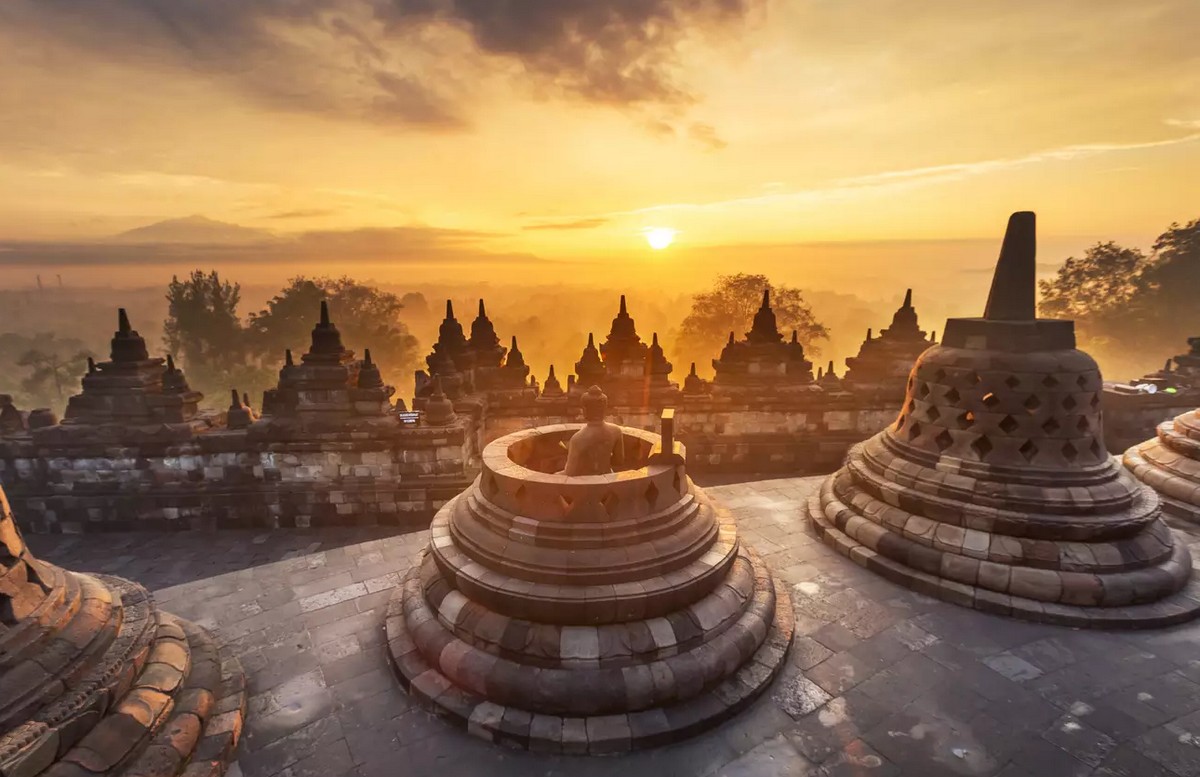
Jogja (the common name of Yogyakarta) – a Central Java city – welcomed me at 8pm with a gentle rain, quiet traffic in not-too-crowded streets, and closed one-storey roof-tiled houses. The marble blocks of the Tentrem Hotel, along with the sweetness of local specialty snake fruit, had cooled off from the heat of the tropical summer.
Be warned of the rains in Jogja. We woke up very early. Although quit eager to explore the area, I have to admit I was ecstatic and overwhelmed by the buffet of local cuisine and Japanese and European dishes, which Tentrem served for diners.
After 8am, sunshine blazed on the quiet streets of Jogja. Just a 10-minute drive from the hotel, I found myself embraced by the cool shadow of keben trees in Kraton – the royal palace that was once the home of the legendary Sultans – the rulers of Java. One side overlooks the Indian Ocean, while the other faces the Merapi Volcano. Even today, the Kraton Royal Palace is an invaluable religious, historical and architectural heritage recalling the golden age of many generations of Sultans. From the symbols engraved on the walls and splendid pillars, to Gamelan – the traditional bronze instruments used for the royal family – what impressed me most are the precious rituals of the royals that would be carried out from birth to adulthood, marked by many important milestones associated with the holy number 7: 7 months in the womb, 7 months after birth, 7 years old and 17 years old.
The life of each Sultan is encapsulated in a picture of a lush tree. According to our tour guide, Ms. Amieroel, age 45: in this palace, each branch of the tree represents a wife, leaves represent the daughters and fruits represent the sons. When asked about the traditionally dressed old men who were gathered sitting cross-legged silently as though they were practising meditation, Ms. Amielroel said that this day was also the Sultan’s birthday (gebyokan). “On Sultan’s birthday, these people will sit facing the Sultan’s residence and pray to the gods,” she said. The tranquillity of Kraton’s immense expanse made me realise the depth of Jogja’s history and its citizens’faith. I sensed a deep contemplation of the spiritual values and strong beliefs that have flowed in the hearts of Java’s islanders. Although it is a pity that the busy schedule did not allow me to stay longer, I look forward to returning.
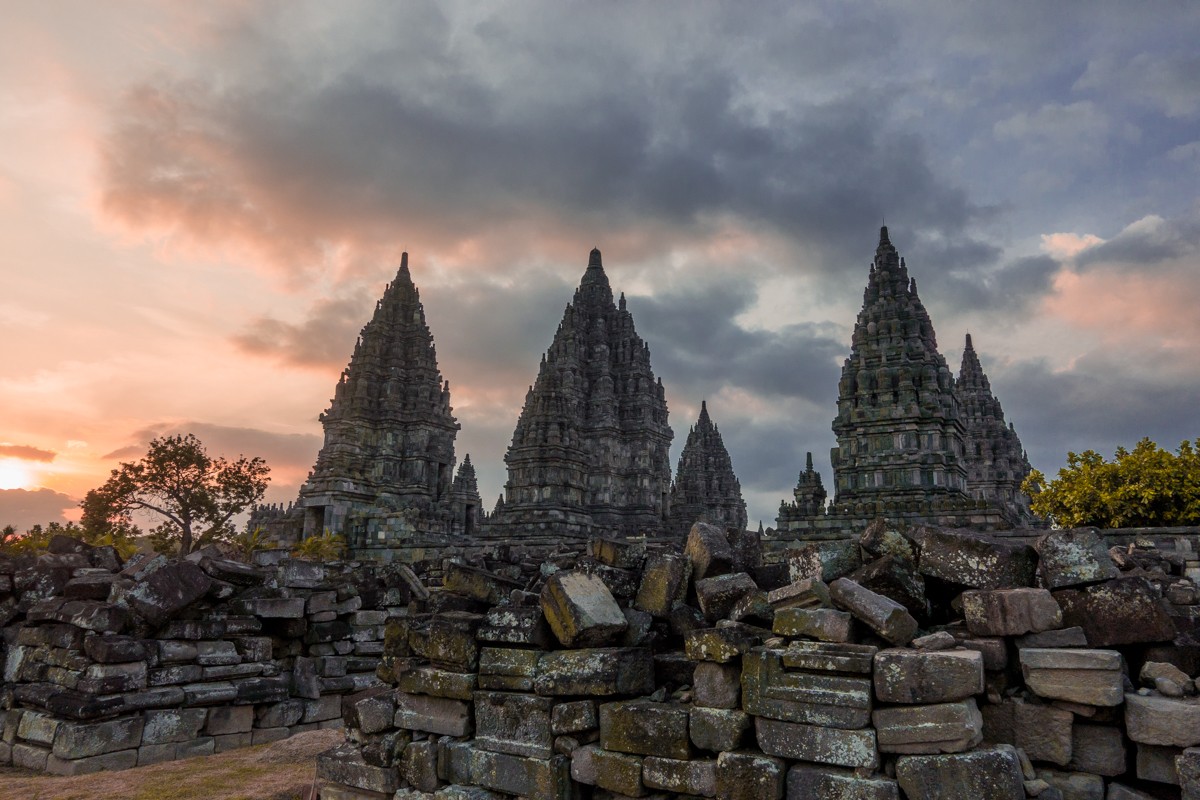
Not far from Kraton to the West is Taman Sari – also known as Water Castle. This is a unique architectural complex built to serve the leisure and spiritual life of the royalty. The pool area includes Umbul Panguras (for Sultan), Umbul Pamuncar (for Sultan’s wives), and Umbul Kawitan (for Sultan’s children). At the entrance, there is a dome pavilion, the place where the royal family would sit and enjoy performances. Next to the swimming pools, there is a resting place with low arches that makes people keep their heads down when going through, to remind them of respect for the Sultans.
Under each fixed bed, there is a dish of dry herb to create a natural aroma for the room. There is also a souvenir shop here. Right outside the entrance, there is an old artisan who manipulates the wayang kulit and other drawings of batik motifs on the fabrics. It is known that the puppetry artisan, Jumakir, has 40 years of experience in this career, as it is his family’s traditional craft. Watching the artisans engrossed in engraving tiny details on a piece of buffalo skin, it is difficult to describe just how meticulous this work is – not to mention the previous steps of processing then painting on the carved skin.
To reach the pool area, there is a royal passage built as a tunnel that is considered a temple. This area is known as Sumur Gumuling (Gumuling Well). In my first visit here, I sensed that this place was ideal for praying or walking meditation because of circular structure with dome windows where natural light pours down from the oculus. Here, you will have the chance to admire the unique architecture of the four staircases meeting at one point. The architecture of every place I visited all express a Javanese philosophy of life: respect of the balance and harmony between the interior and the exterior.
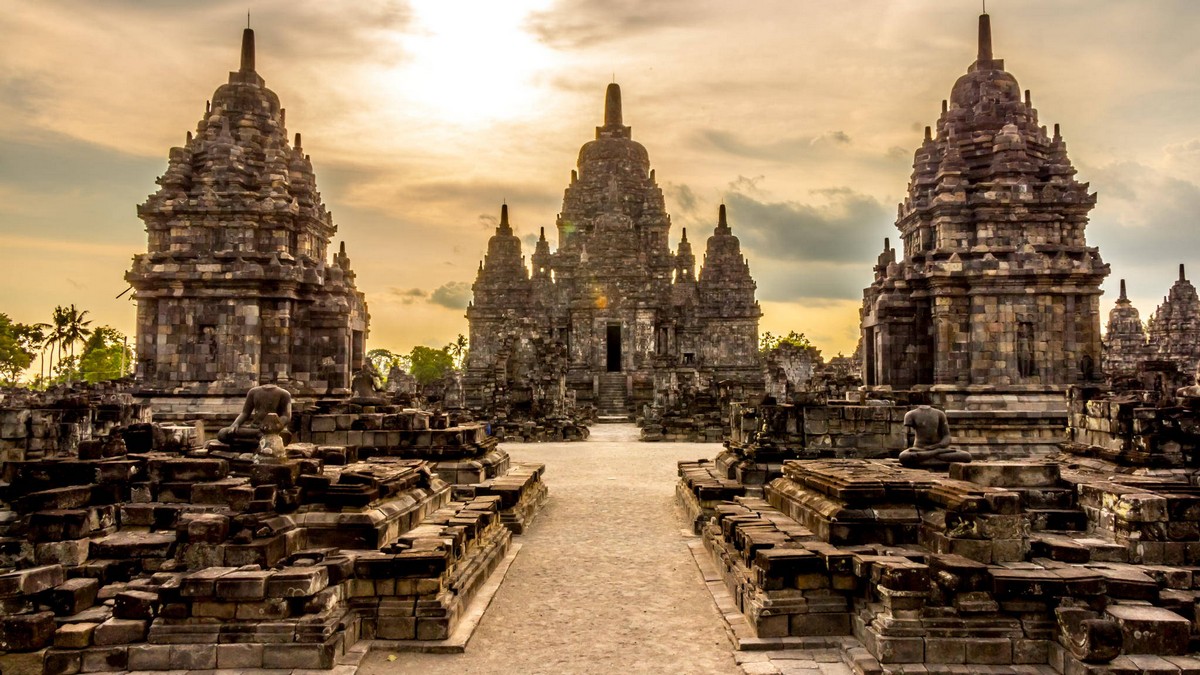
Borobudur sunrise
We continued to travel through the era of the Sulans the next morning, following Javanese dreams from ancient times. Leaving our hotel at 3am, we arrived at Magelang at almost 5am. In the thick darkness and the cold atmosphere of Magelang in early morning, we started our journey with a small backpack and a flashlight. We began to explore the legendary Buddhist temple – Borobudur. The road is narrow but not too steep. In the darkness, my feet followed the rhythm of the praying chorus, which echoed everywhere and blended into the darkness, giving me the feeling that I was being embraced in a brilliant and unshakeable faith. With each step, I diverted my thoughts to the faith of the industrious men who patiently brought each stone to the top of the hill to build this legendary nine-storey Buddhist architecture with 2,672 bas-relief panels carved into stone and 504 Buddha statues. The top dome is surrounded by 72 Buddha statues, each statue is placed in a Stupa. It is said that Borobudur is not just a temple, it is a Buddhist University where all the philosophies of this religion are depicted in the stories on the bas-reliefs.
This is an unforgettable experience of a lifetime, from the moment you touch Borobudur’s dewy misty stones in the dark, until you see the stone carvings that appear in the early morning light. As you get to the highest floors, there are quite a lot of tourists, mainly Western visitors, all seated in silence, facing the horizon. We put down our backpacks and sat at the foot of Stupas. Some had opened their cameras, some had already pressed their camera buttons, hoping capture the most impressive time-lapse footage. We were all looking forward to the same magical thing: the sun.
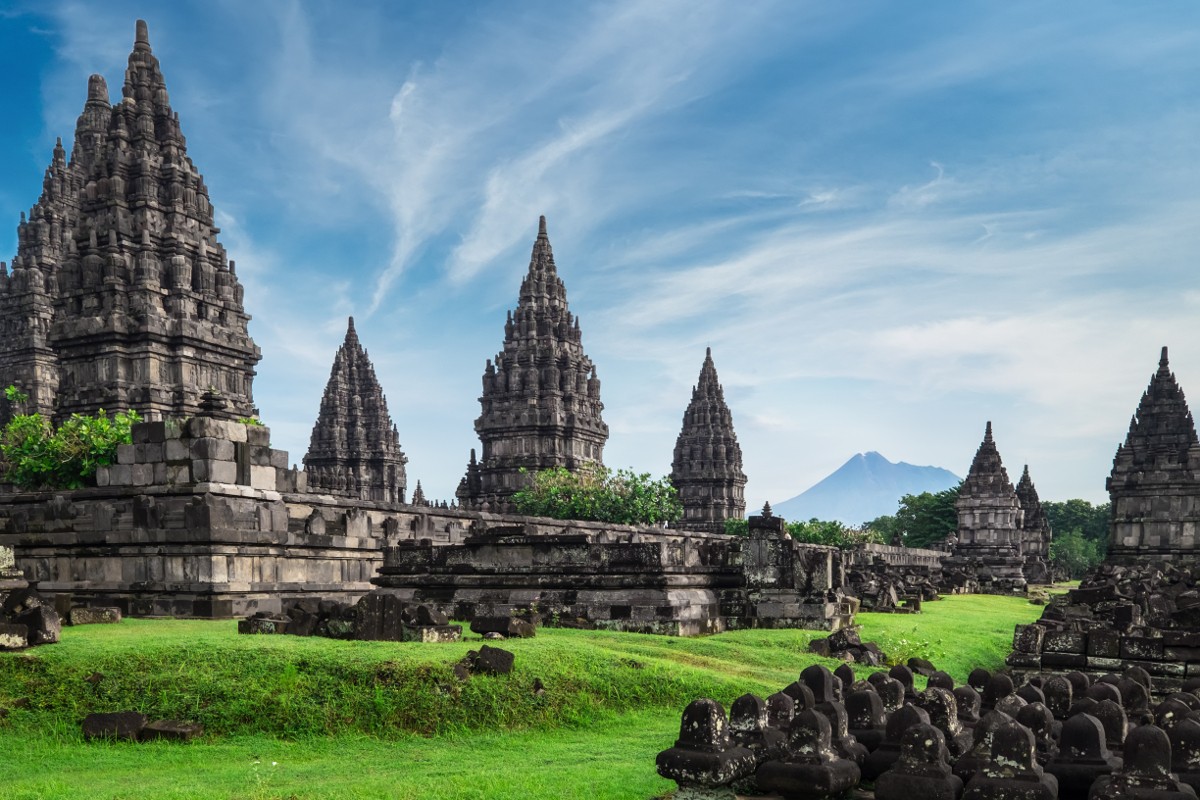
The sunrise in Borobudur is perhaps the most gorgeous scene I have ever seen, not only because of the beauty of the sun pouring its first rays as it emerged from the summit of Merapi volcano, but also because it is a sacred moment when the brilliant light shines through the architectural masterpieces surrounding me.The strange thing about Borobudur is that, when you are here, everything makes you think of contrast. Outside the temple, in the vast sky, there is a splendid, breathtaking dawn that lasts only a few moments; on the contrary, here is a rough mass of stone from the 9th century and countless moral lessons passed down through Javanese generations. You can set foot on Borobudur for a moment but you must spend your lifetime absorbing the religious philosophy of this beautiful stone architecture. We always stay in the middle of these extremes. “Everything is nothing” – these were the words of the native guide that came to my mind as I strolled under the bright sunlight and fresh air covering the lawns and trees around Borobudur Temple.
Wanderlust Tips
♦ Weather
In Central Java there are two seasons, rainy season (October – April) and dry season (May – September). Central Java has tropical weather with high temperature and humidity, so the weather is quite hot and the average temperature is 21-32°C. In the rainy season (when I went to Java), in the afternoon, there may be thunderstorms, and it is usually rainy. There are heavy rains from late afternoon to late evening and in the evening the weather is cool and a little bit chilly at times. Be sure to pack jeans, a T-shirt, a thin coat, and a raincoat or an umbrella.
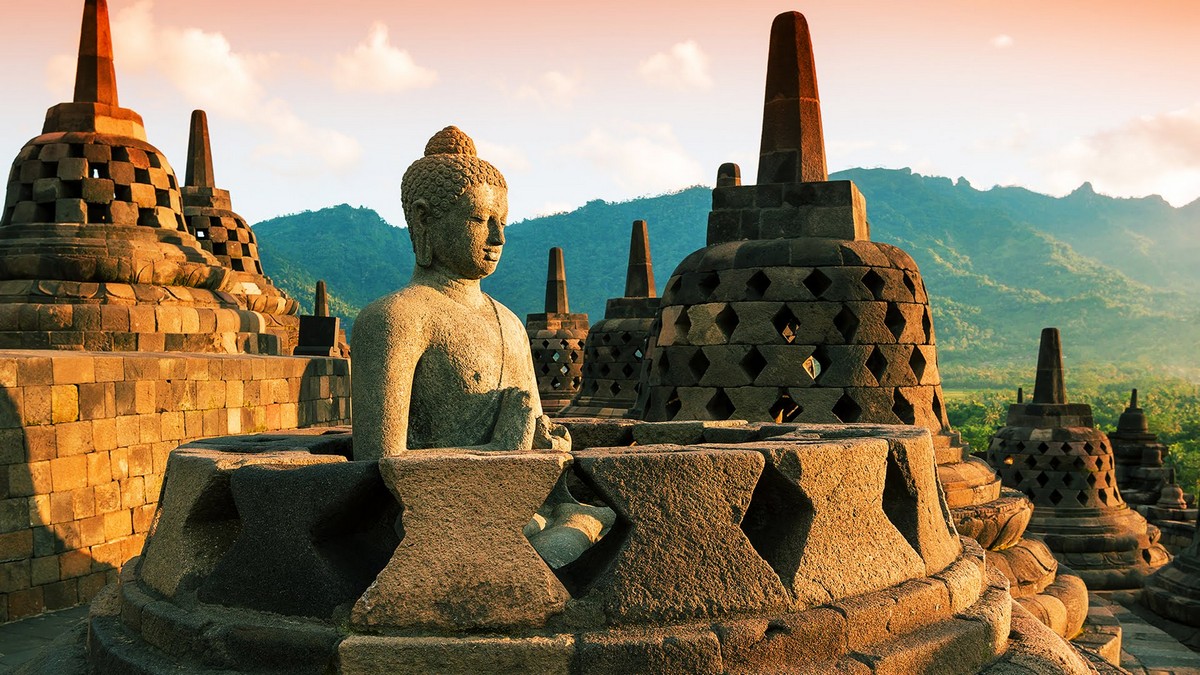
♦ Transportation
Jogja is only 1 hour flight away from Jakarta. The main transport in Yogyakarta is motorbike or car. Note that you must drive on the left-hand side of the road in Indonesia. You can rent a motorbike at your hotel for IDR100,000 per day, and a bike for IDR30,000 – IDRUSD50,000 per day. Car rentals cost from about IDR500,000. If you rent more than 1 day, you can negotiate with the owner of the hotel or rental service. Do not forget to take a cyclo (trishaw) or horse-drawn carriage (around Kraton or Burobudur temple area). You can also take 2 different bus routes to Borobudur (ask for local advice).
♦ Notes when visiting the Royal Palace
In the royal palace you can walk comfortably, but you also need to stay quiet because the current Sultan is living there. In addition, there are many halls with open-air space that you are not allowed to step on so pay close attention to Kraton’s warning signs. The schedule of Gamelan performance is Mondays and Tuesdays, from 4am to 4pm; the wayang kulit performance is on Wednesdays and Saturdays, from 9am to afternoon; the Javaness recitation is on Fridays (10am – 11 am); and the traditional dance performance is on Thursdays (from 10am) and Sundays (from 11am). Around the royal palace there are many souvenir shops and street vendors, and you will be welcomed very enthusiastically. Remember to bargain before buying anything like bamboo trumpet or paper fan.
♦ Shopping
There is so much to buy in Central Java: bright and sophisticated batik clothing, elaborate puppets, wooden masks, or ceramics. There are many places to buy batik clothing, and if you do not hesitate to travel a long distance, you can explore the history of textiles and how to make batik at the Batik Museum (Solo City just about 1.5 hours drive from Jogja) and buy directly at Batik shops there.
♦ Cuisine
Compared to Vietnam, Yogyakarta does not have many vendors selling food on the streets. Sometimes you will see few parlours selling ice-cream or satay skewers. For those who are unfamiliar with hot and spicy foods, chicken or beef dishes are marinated with spice, and many dishes are rich in sugar or fat. Prepare in advance any fruit or bread. For those who are used to Hala food, this is truly a gastronomic paradise with countless tempe (traditional cereal loaf), gudeg wijilan (green jackfruit stewed with chicken, eggs, coconut and other spices served with rice), and tahu bacem (fried tofu).
♦ Notes when visiting Borobudur temple
- USD22 or IDR280,000 for a foreign adult, USD10 or IDR110,000 for a foreign student, and IRR30,000 for an indigenous adult or foreigner working in Indonesia.
- Local tour guides for the Borobudur tour is about IDR50,000 – 100,000 per tour. The guides speak English fluently.
- Note that when visiting Borobudur, you are not allowed to sit from the 3rd level up to higher levels on the Stupa. Also, you are not allowed to climb on the Stupa (according to the native guide, there was an accident when a child poked his head in the holes of the Stupa and got stuck in there).
Hong Nhung | Wanderlust Tips | Cinet


[…] plays an extremely important role for people in Indonesia in general and in Bali in particular. Most Indonesians are Muslims, but in Bali, Hinduism is the […]